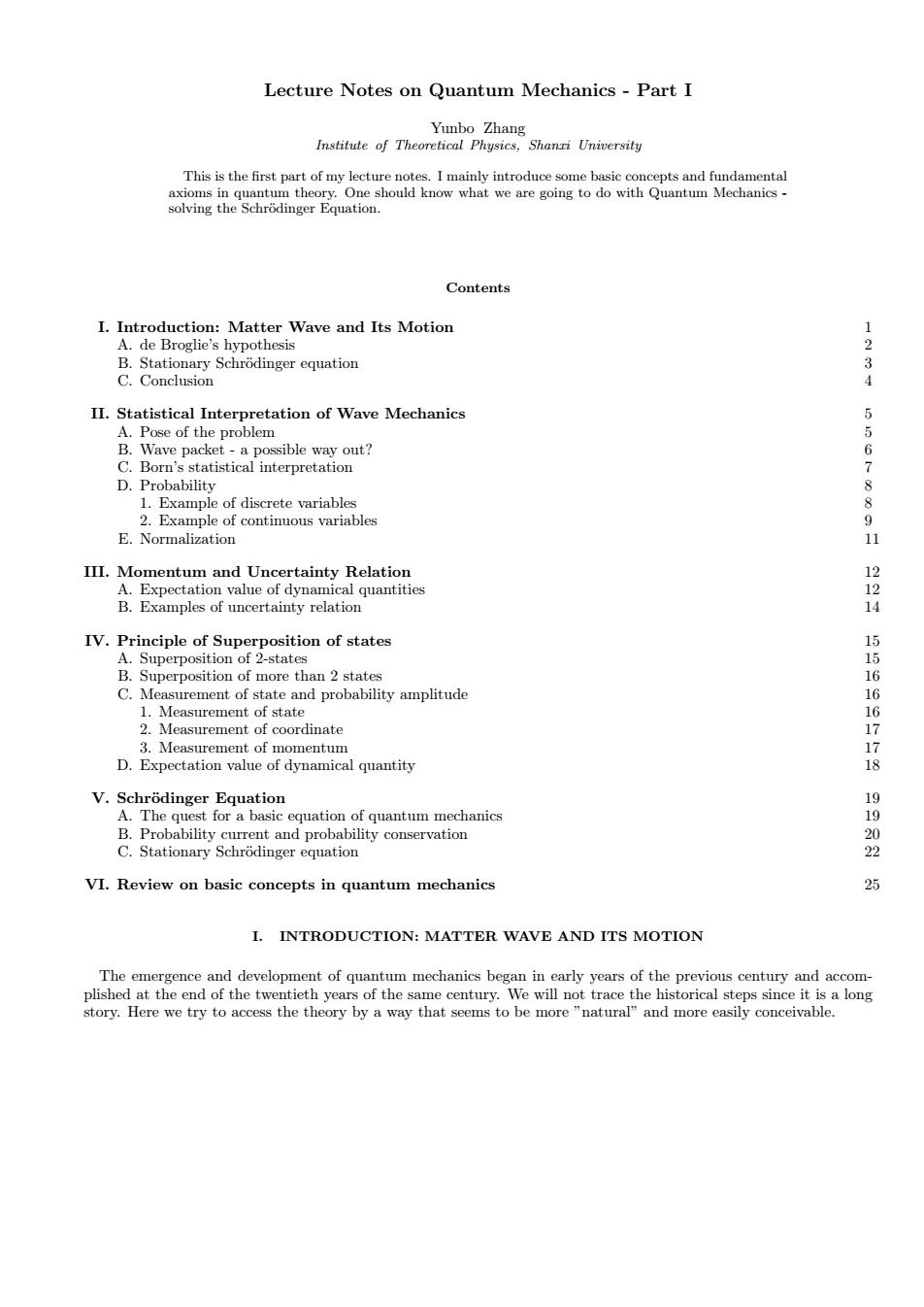正在加载图片...

Lecture Notes on Quantum Mechanics-Part I IeThSnr ongthe Schrodinger Equation. Contents 1.wave ad I Motion 2 34 II.Statistical Interpretation of Wave Mechanics 556 8 891 IIL.Moment nd Ine 224 ty amplitude t of coordinate 556616778 D.Expectation value of dynamical quantity v.ehridmganatiac 202 VI.Review on basic concepts in quantum mechanics 25 L.INTRODUCTION:MATTER WAVE AND ITS MOTION The emergence and development of quantum mechanics began in early years of the previous century and accom- Lecture Notes on Quantum Mechanics - Part I Yunbo Zhang Institute of Theoretical Physics, Shanxi University This is the first part of my lecture notes. I mainly introduce some basic concepts and fundamental axioms in quantum theory. One should know what we are going to do with Quantum Mechanics - solving the Schr¨odinger Equation. Contents I. Introduction: Matter Wave and Its Motion 1 A. de Broglie’s hypothesis 2 B. Stationary Schr¨odinger equation 3 C. Conclusion 4 II. Statistical Interpretation of Wave Mechanics 5 A. Pose of the problem 5 B. Wave packet - a possible way out? 6 C. Born’s statistical interpretation 7 D. Probability 8 1. Example of discrete variables 8 2. Example of continuous variables 9 E. Normalization 11 III. Momentum and Uncertainty Relation 12 A. Expectation value of dynamical quantities 12 B. Examples of uncertainty relation 14 IV. Principle of Superposition of states 15 A. Superposition of 2-states 15 B. Superposition of more than 2 states 16 C. Measurement of state and probability amplitude 16 1. Measurement of state 16 2. Measurement of coordinate 17 3. Measurement of momentum 17 D. Expectation value of dynamical quantity 18 V. Schr¨odinger Equation 19 A. The quest for a basic equation of quantum mechanics 19 B. Probability current and probability conservation 20 C. Stationary Schr¨odinger equation 22 VI. Review on basic concepts in quantum mechanics 25 I. INTRODUCTION: MATTER WAVE AND ITS MOTION The emergence and development of quantum mechanics began in early years of the previous century and accomplished at the end of the twentieth years of the same century. We will not trace the historical steps since it is a long story. Here we try to access the theory by a way that seems to be more ”natural” and more easily conceivable